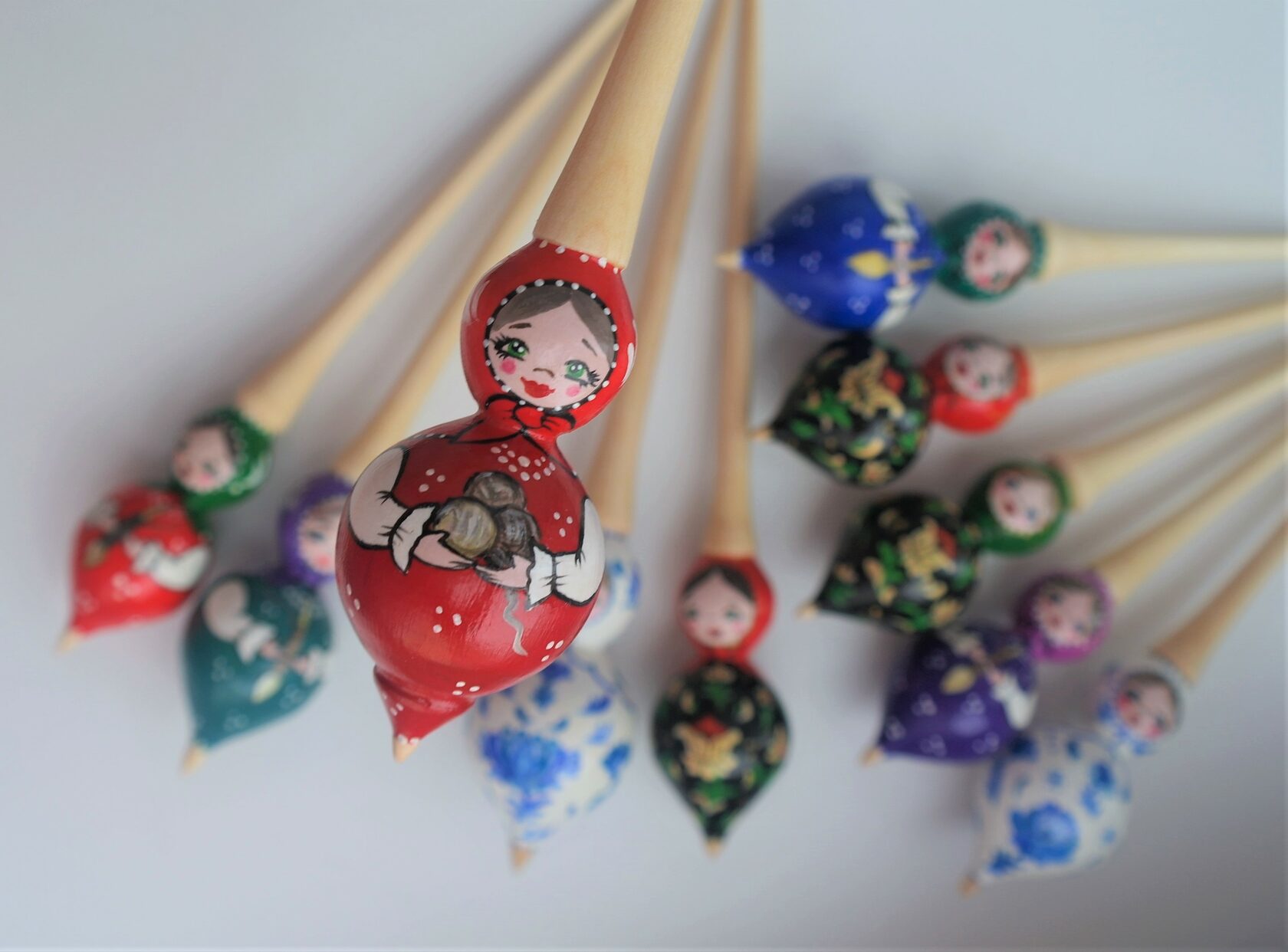Collaboration is when at least two people come together and contribute their skills, knowledge, and expertise for the benefit of a project. It’s a spinner working with a weaver to spin yarn for handwoven scarves, or a weaver collaborating with a sewer to make handwoven pillows. Collaboration allows us to achieve better results and create something really amazing. Carry Cherry spindles is all about collaboration. For now, I collaborate with several independent makers (woodturners, artists, basket weavers, laser beam cutters). I truly enjoy the result of our collaborative work and treasure each maker of our team.
I started spinning in 2014 and I knew nothing about spindles, spinning methods, types of yarn, etc. I just fell in love with the process and let my hands do what they wanted to. A bit later I already knew exactly what tools I needed for my fiber journey and luckily, I got a friend woodturner. This was a starting point for both of us, we shared thoughts and experiences, we experimented and created. Working in close cooperation allowed us to create spindles that are both functional and pretty. Later, a returning customer asked for special order with a hand painting on her spindle. This was a challenge and a new opportunity for me. I will not say that it was easy to find the right person but there is no easy way for growth. Very often difficulties in one’s way lead to success, you just need to be patient and don’t give up.
Based on my experience I can tell that several factors are crucial for a successful collaboration:
- Communication. The most important aspect in any relationship. To make a great collaborative team you should create an ability to build an open dialog where each member can easily express opinions, share thoughts and critics, correct mistakes, and suggest ways to solve problems.
2. Mutual trust. I know that this is not easy to implement, especially when you just decided to collaborate. It may seem that it’s easier to make everything by yourself, and this is totally fine if you feel comfortable with it, but if you decided to team up it’s important to find a competent, reliable person with the right skills and knowledge who will handle the task and no less important – trust your competence.
When I teamed up with my friend artist Olga who hand-paints most of the spindles, I knew from the very beginning that she is an expert in her field. I fully trust her experience and knowledge, accepting her recommendations and advice about composition and design. Olga in her turn takes into consideration all my instructions and references for future designs and creates beautiful hand paintings. We fully trust each other and this is the key to success.
3. Coordination. To manage the process and make everything go smoothly there should be a leader who steers the collaboration and takes responsibility for the final result. A leader provides support and fosters a collaborative working environment.
Being a leader of my team I’m responsible for all the mentioned above, plus I develop strategies and choose the direction for us to grow, generate ideas and take risks, manage all the processes, and take responsibility for the final result.
One can work collaboratively or individually. Both ways are great and have their pros and cons. I’m convinced that collaborative work eases the process of creating something special. When working in close cooperation we join our ideas, experience, and skills, and get amazing results. Matryoshka spindle is a great example of teamwork. Last summer I got this idea to make a supported spindle with a whorl looking like a traditional Russian doll – matryoshka. I made the design and we started discussing the details with my woodturner. A month later the first two blank spindles were ready for hand painting. I came to my friend artist with this idea, we agreed on the designs and Olga made a beautiful paintings. Those two spindles turned out so pretty, that we got 10 custom orders for matryoshka spindles. Then another 10, and another 10. Custom order is such a wonderful idea because spinners can choose all the colors of their matryoshkas: clothes, shawl, eyes, hair; also, they can choose an item in matryoshka's hands (spindle, yarn, a cup of tea, cat, even a sheep or a birdhouse!)
Matryoshka spindle is just one of the cases of successful collaborations. Just think about the tremendous opportunities and benefits that teamwork can bring. It joins together talent, providing growth of your project. For sure it saves the most valuable resource – time, also it helps to achieve goals and complete tasks faster. Put simply, two, three, or five minds are better than one.
Building a creative collaboration is so rewarding though it demands efforts, and sometimes this path is thorny because it’s impossible to foresee all the difficulties on the way. Nevertheless, bringing people (artists!) together is no less inspiring than creating something on your own. Discover the advantages of collaborative working it’s totally worth it!
